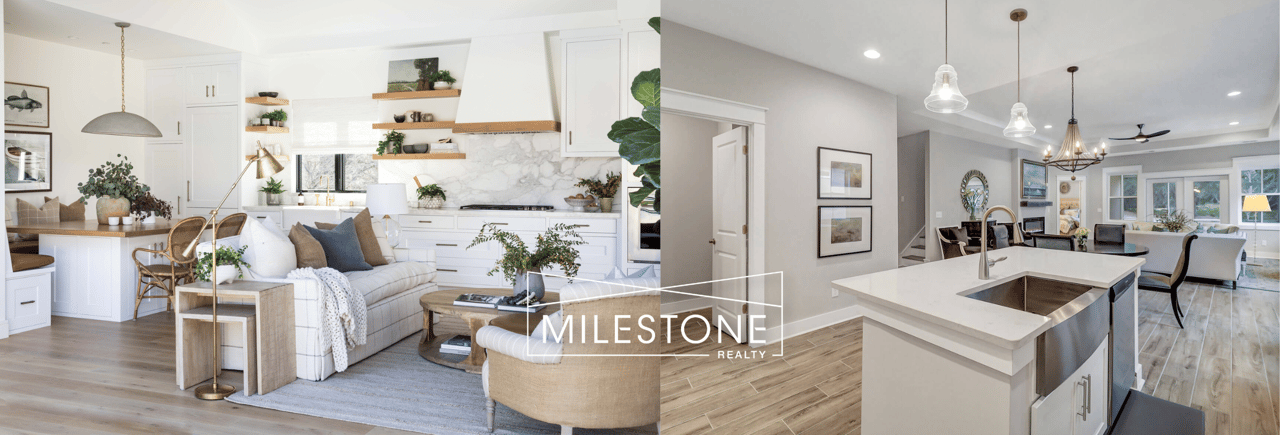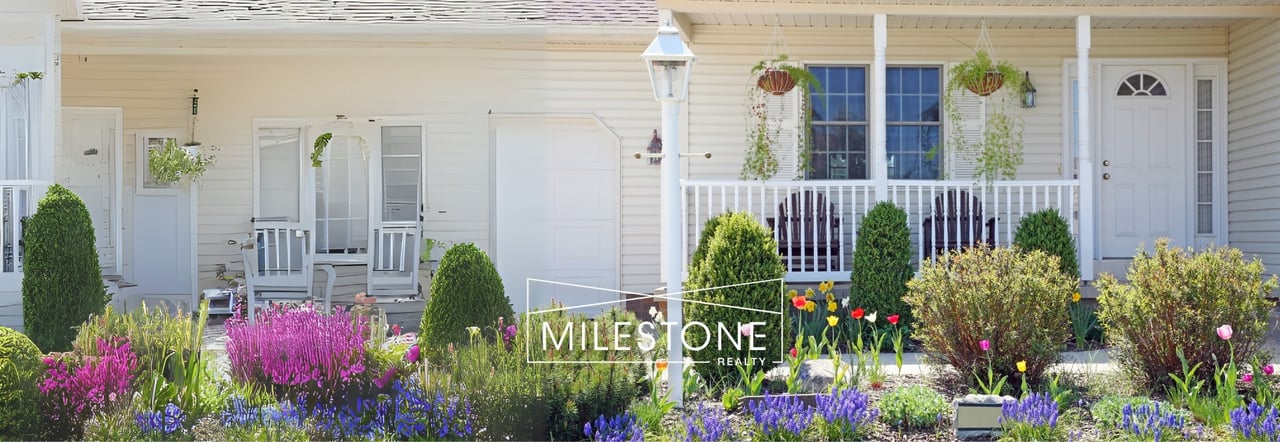Choosing the Best Floor Plan for Your Home:
Open or Traditional?
When it comes to choosing a home, one of the big decisions is whether to go with an open floor plan or a traditional one. Both styles come with their own set of benefits, and at Milestone Realty, we’re here to help you figure out which one fits your lifestyle best.
What is an Open Floor Plan?
An open floor plan typically combines multiple living areas—like the kitchen, dining room, and living room—into one large, open space without partitions. The goal is to create a seamless flow throughout the home, promoting a sense of space and togetherness.
Advantages:
- Ideal for Entertaining: with fewer walls, this is perfect for hosting family gatherings or parties. You can interact with guests while preparing meals of relaxing in the living room.
- Better Natural Light: The lack of walls allows sunlight to flow freely through the home, brightening up the space.
- More Spacious Feel: Open layouts can make even smaller homes feel more expansive. The continuous flow of space gives the illusion of a larger area.
- More Flexible Layouts: Open floor plans often offer more flexibility when it comes to arranging furniture or redesigning spaces to suit your needs.
Disadvantages of Open Floor Plans:
- Less Privacy: If you're someone who values personal space, an open floor plan may not be ideal. It can be challenging to find quiet corners for work or relaxation.
- Noise Levels: With no walls to absorb sound, noise can travel easily from room to room, making it harder to maintain a peaceful environment.
- Limited Storage Options: Open layouts may have fewer built-in storage solutions, requiring creative approaches to keep things organized.
- Difficult to Control Temperature: Open spaces can sometimes make it more difficult to regulate temperature evenly, as heat or air conditioning may not circulate evenly throughout the larger areas.
What is a Traditional Floor Plan?
A traditional floor plan typically divides the home into distinct rooms with walls and doors. Kitchen, Dining & Living room are often located in separate areas, offering a more structured layout.
Advantages:
- More Privacy: With separate rooms, each area of the house provides more privacy. This is especially beneficial for families with different schedules or people who work from home.
- Noise Control: Rooms with walls naturally contain sound, so noise is less likely to travel between areas.
- Defined Spaces: For those who like having clear boundaries between different parts of the home, traditional layouts can offer better organization and separation.
- Better Temperature Control: Separate rooms often allow for easier regulation of temperature in each individual space.
Disadvantages:
- Limited Social Interaction: If you're hosting guests or spending time with family, traditional floor plans can feel a bit isolating since each room is more contained.
- Smaller Feel: Traditional layouts may make homes feel smaller, especially in older designs where rooms are more compartmentalized.
- Less Natural Light: The division of spaces can sometimes block the natural flow of light through the home, leaving some rooms darker than others.
- Less Flexibility in Layout: Traditional designs often have predefined spaces that may not be as adaptable to your evolving needs or preferences.
Which One Is Right for You?
The best floor plan depends on your lifestyle—open layouts offer bright, connected spaces, while traditional ones provide more privacy and structure.
At Milestone Realty, we understand that finding the right floor plan can make a significant difference in your day-to-day living. Our team is dedicated to helping you find a home that fits both your style and your needs, whether that’s an open concept space or a more traditional layout.
-
CLINK LINKS and FOLLOW US for more updates!










